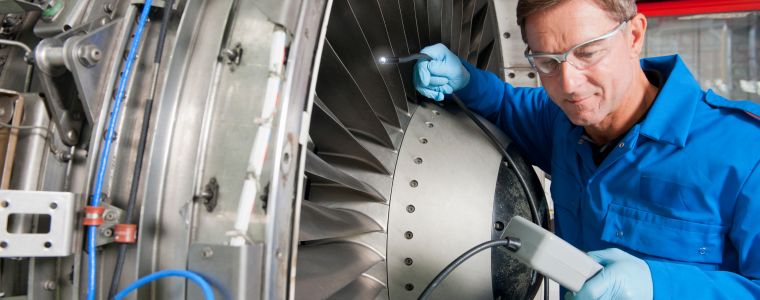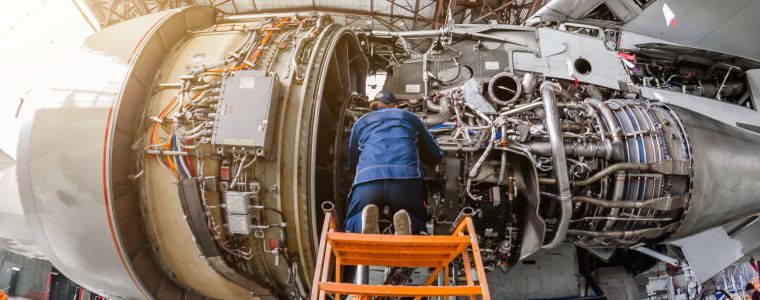The Role of Nickel Alloys in Aerospace Engineering
Introduction to Nickel Alloys in Aerospace Engineering
In the complex world of aerospace design, the importance of material selection cannot be overstated. The quest for high performance, durability and safety has led engineers and designers to explore innovative materials including nickel alloys.
Nickel alloys are engineered to meet the stringent demands of aerospace applications. These alloys are prized for their exceptional properties, including high strength, excellent corrosion resistance and outstanding performance at extreme temperatures.
The unique attributes of nickel alloys make them indispensable in constructing critical aerospace components, from turbine engines to landing gear.
Properties That Propel Aerospace Innovation: The Role of Nickel Alloys

In the dynamic realm of aerospace innovation, the materials used play a pivotal role in pushing boundaries and enhancing safety. Nickel alloys are renowned for their unique properties that contribute to groundbreaking advancements in the industry.
- High-Temperature Strength: Withstanding Intense Heat and Pressure
Nickel alloys exhibit extraordinary high-temperature strength, making them ideal for components subjected to extreme heat and pressure, such as those found in aircraft engines. This exceptional strength ensures structural integrity and performance in the harshest conditions, enabling aerospace engineers to design more robust and reliable systems. - Corrosion Resistance: Prolonging Structural Integrity
Aerospace alloys, including nickel alloys, are lauded for their exceptional corrosion resistance. In the aerospace industry, exposure to harsh environmental conditions is common. The ability to withstand corrosion ensures that critical components maintain their structural integrity over time, reducing maintenance costs and enhancing safety. - Fatigue Resistance: Ensuring Longevity in Cyclic Loading
Fatigue resistance (the ability to resist fracture or cracking under repeated loading) is a critical property in aerospace materials. Components in aerospace materials undergo cyclic loading (the application of repeated or fluctuating stresses, strains, or stress intensities to locations on structural components) during their operational life. Nickel alloys can endure repeated stress cycles without degradation. This is a fundamental factor in the safety and longevity of aerospace structures. - Lightweight Durability: Balancing Strength and Weight
Weight is a critical consideration in aerospace design. While strength is essential, the need to maintain a lightweight structure is equally vital to optimise fuel efficiency and overall performance. Nickel alloys strike an impressive balance between strength and weight, offering aerospace engineers the ability to create durable yet lightweight components.
The role of nickel alloys in aerospace is undeniable, as they deliver the properties required to drive innovation in an industry where performance, reliability, and safety are paramount. These materials not only meet the stringent demands of aerospace engineering but also support advancements in the field.
Nickel Alloys in Aerospace Applications: Elevating Performance and Reliability

Within the aerospace industry, the utilisation of nickel alloys has become essential for innovation, elevating performance, reliability and safety across various critical applications.
- Jet Engines: Enhancing Thrust, Efficiency, and Safety
Nickel alloys have revolutionised jet engine technology by providing the high-temperature strength and corrosion resistance required to operate efficiently under extreme conditions. These alloys enable engines to generate more thrust while maintaining their structural integrity, enhancing both performance and safety. - Turbine Blades: Enduring Extreme Heat and Mechanical Stress
Nickel alloys are the materials of choice for turbine blades, which operate in the scorching and mechanically demanding environment of the engine. Their remarkable high-temperature strength and fatigue resistance ensure that these blades endure, even when subjected to intense heat and mechanical stress. - Exhaust Systems: Corrosion Resistance in Harsh Environments
Aerospace exhaust systems face harsh conditions, including high temperatures and corrosive exhaust gas. Nickel alloys excel in these environments, offering superior corrosion resistance. This property extends the life of exhaust systems and reduces maintenance costs. - Aircraft Structures: Strengthening Frames and Wings
The structural integrity of aircraft frames and wings is crucial for the overall safety and performance of an aircraft. Nickel alloys provide the strength and durability necessary to bolster these structures, reinforcing them against various stresses and loads. - Aerospace Fasteners: Maintaining Integrity in Critical Joints
Nickel alloy fasteners play a critical role in maintaining the structural integrity of an aircraft. Their corrosion resistance and exceptional strength ensure that these fasteners maintain their integrity in the most demanding conditions, enhancing the overall safety of the aircraft.
Nickel alloys consistently push the boundaries of what is possible in aerospace technology. Their unique properties have revolutionised various aerospace applications, from powering jet engines to reinforcing critical aircraft components. As the aerospace industry continues to evolve, nickel alloys remain at the forefront of innovation.
Blogs of interest:
Types of Corrosion-Resistant Metals and Their Uses.
What is an alloy metal? The Beginner’s Guide
Why Are Alloys Harder Than Pure Metals?
Corrosion Resisting Alloys for Aqueous Corrosion Applications Across Industries
The Properties of Metals and Alloys & How They Affect Use
Common Nickel Alloys in Aerospace Applications

In the aerospace industry, the selection of materials is a critical factor in performance and safety standards. Nickel alloys, in particular, have risen to prominence due to their exceptional properties that meet the rigorous demands of aerospace applications.
Below are ten commonly used nickel alloys that underpin the aerospace industry:
- Inconel® 718: Known for its formidable combination of high strength, corrosion resistance, and impeccable weldability, Inconel 718 is a crucial aerospace component, used in engine parts to aircraft frames.
- Inconel® 625: This alloy boasts an unyielding resistance to high-temperature corrosion, making it an indispensable choice for aerospace ducting systems and engine exhausts.
- Monel® 400: With its remarkable resistance to the corrosive forces of seawater and various acids, Monel 400 is used in many aerospace applications, including aircraft fasteners.
- Hastelloy® C-276: Highly sought after for its exceptional corrosion resistance, Hastelloy C-276 is deployed in aerospace components exposed to aggressive chemical environments.
- Invar 36®: Invar 36 is used when aerospace applications require low thermal expansion, such as in precision instruments and satellite components. It is also used for tooling and dies for composite forming and cryogenic components.
- Waspaloy®: Waspaloy’s superior high-temperature strength is harnessed in the construction of gas turbine engines and other vital aerospace components.
- Hastelloy® X: This alloy is a high performer in high-temperature, corrosive environments, making it a reliable choice for aircraft components like combustion chambers.
- MP35N®: Known for its exceptional strength, MP35N is deployed in aerospace applications that demand robust performance, including landing gear and engine fasteners.
- Rene 41: Rene 41’s unique combination of high-temperature strength and corrosion resistance deems it fit for turbine blades and other critical engine components.
- Nimonic® Alloys: Nimonic alloys typically consist of more than 50% nickel and 20% chromium with additives such as titanium and aluminium. They offer outstanding creep resistance (the ability to resist distortion when subjected to prolonged compressive load over a substantial period of time) and high-temperature strength, making them a preferred choice for aircraft engine components.
Nickel alloys thrive under an array of environmental and operational conditions, ensuring the aerospace industry reaches new heights of reliability and innovation. As aerospace technology advances, the significance of material selection becomes even more critical. Nickel alloys remain at the forefront of innovation, propelling aerospace engineering to new heights of performance and safety. For more information or support, get in touch with our team today.
Inconel®, Monel® is a registered trademark of Special Metals Corporation.
Hastelloy® is a registered trademark of Haynes International.
Invar 36® is a registered trademark of Carpenter Technology Corporation.
Waspaloy® is the registered trademark of United Technologies Corporation.
Nimonic® is the registered trademark of Huntingdon Alloys Corporation.
MP35N® is the registered trademark of SPS Technologies, LLC.

